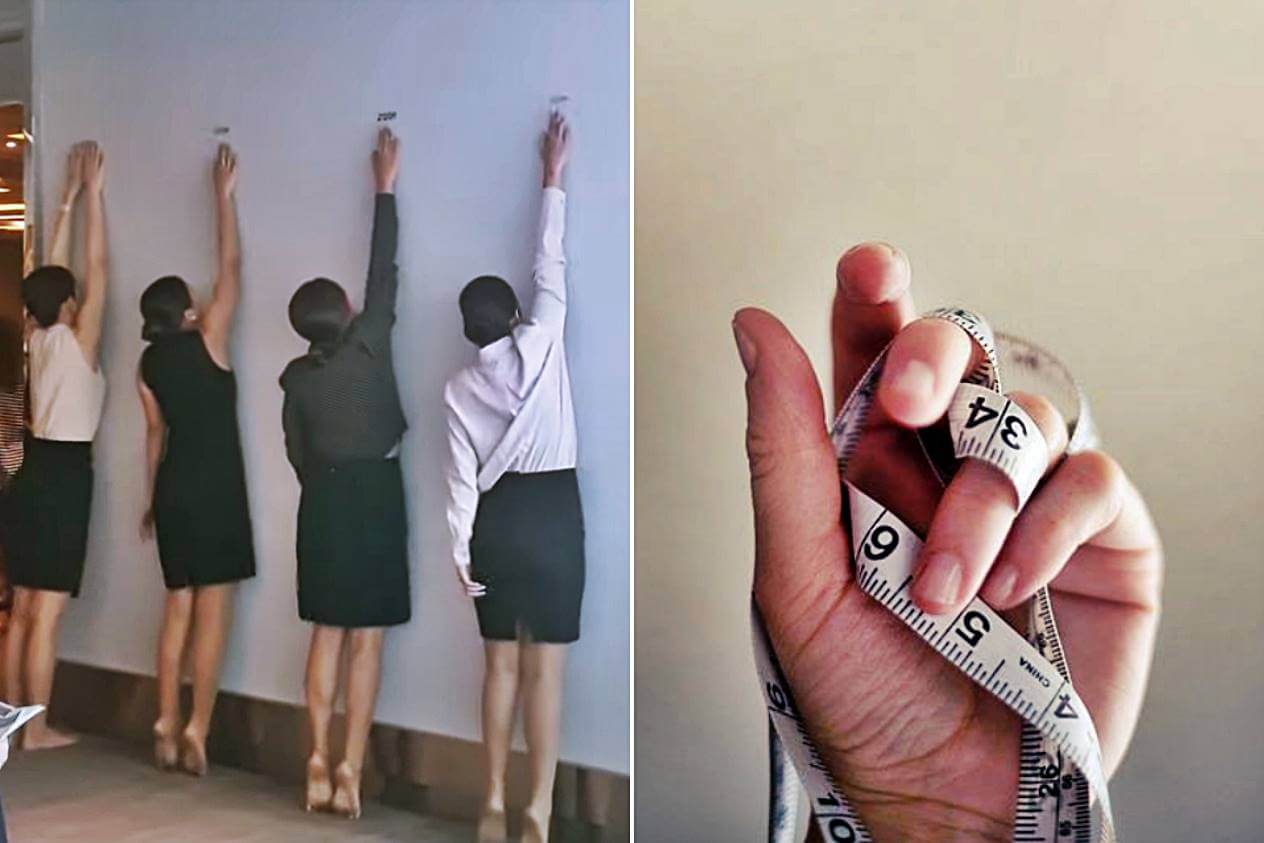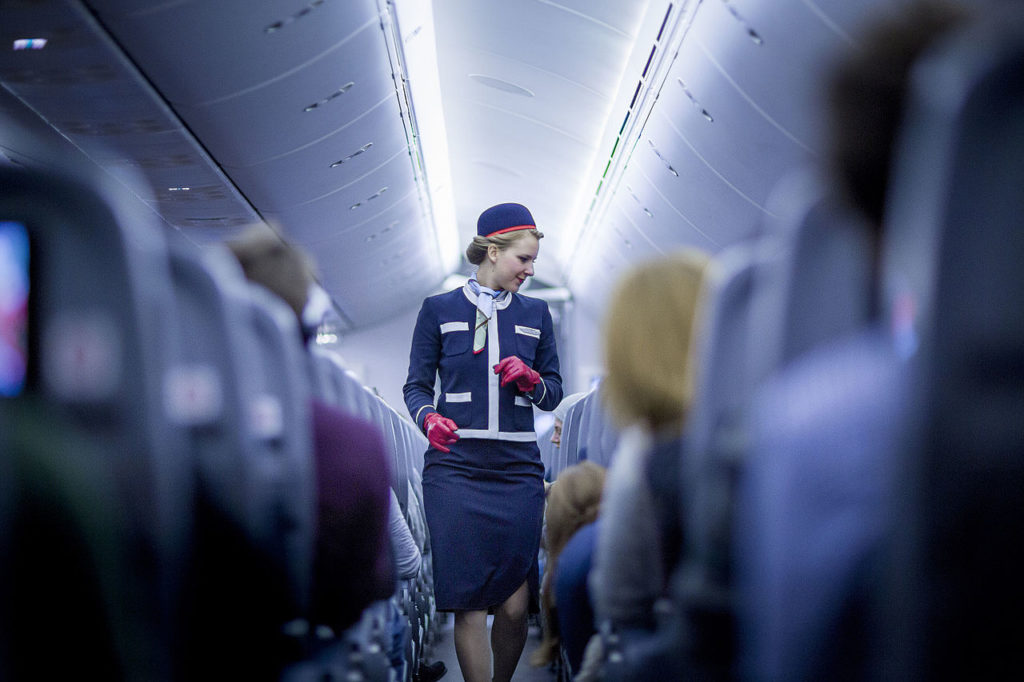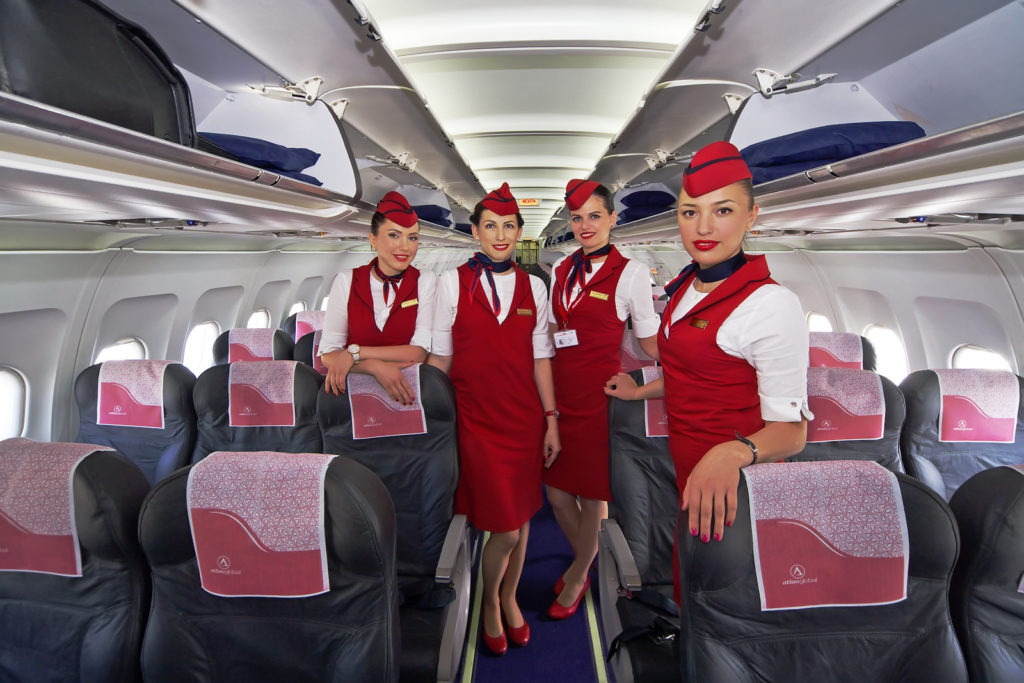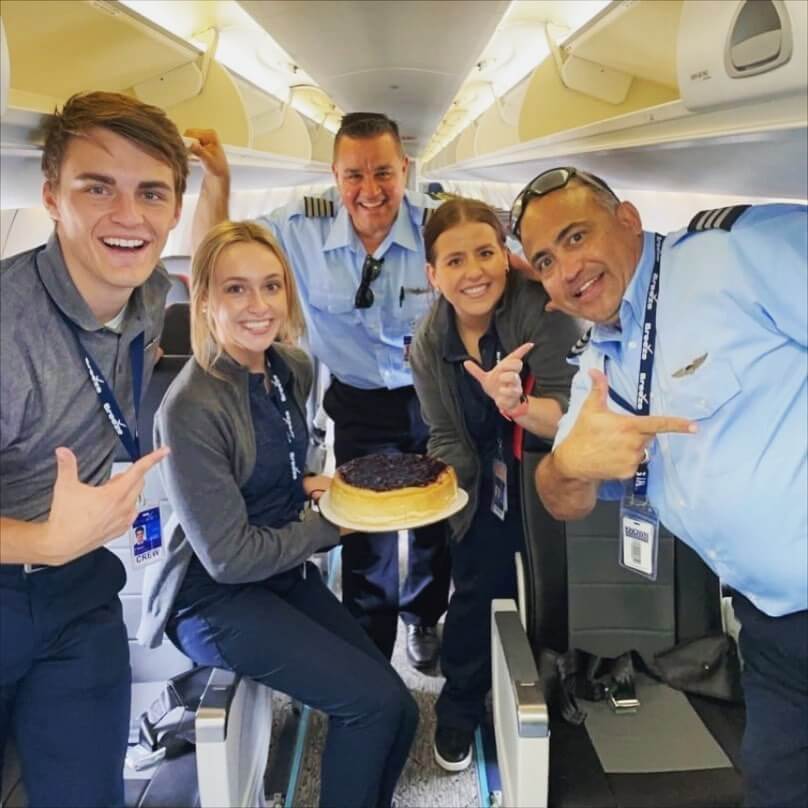- The ideal height for a flight attendant is between 5’2” and 6’2”.
- Airlines have different requirements, so it is important to check with the airline you are interested in working for.
- There is an arm reach test which is a simple yet essential requirement for those seeking to become flight attendants.
One of the most important physical requirements of a flight attendant is height. The most ideal height of cabin crew is between 5’2” (159cm) – 6’2″ (189cm) and those that have a minimum arm reach of 6’9″ (212 cm). But take note that these numbers are a general guideline as each airline company has a different set of height requirements.
Also Read: 15 Must-Have Qualities of Cabin Crews
A cabin crew must be tall enough to reach overhead bins and other high places, but not so tall that they block the aisle or impede passenger movements.
Aside from this, the cabin crew must be able to stand for long periods of time, so height is also a factor in determining their fitness levels.
Contents
- Height Requirements are Specific to the Airlines
- Do all airlines conduct height test?
- How to Pass Arm Reach Test as a Flight Attendant?
- Cabin Crew Responsibilities in the Aircraft
- Height Concerns while on Duty
- Am I too short to become a flight attendant?
- Am I too tall to become a flight attendant?
- Video: Arm Reach Test for Flight Attendant Applicants
- Can I still be a Flight Attendant even if I don’t meet the Height Requirement?
- Height Requirements: Is it really necessary?
- Summary

Height Requirements are Specific to the Airlines
While there is no industry-wide regulation on cabin crew height, most airlines have their own requirements. For example, cabin crew working for Emirates, Qatar Airways and other Middle Eastern airlines is an arm-reach of 212cm.
The height requirements for cabin crew members are specific to the airline. As such, it is important to research the requirements of the airline you are interested in before applying.
Generally speaking, airlines require cabin crew members to be at least 158cm tall. However, some airlines may have a higher height requirement, so it is important to check with the airline before applying.
Additionally, some airlines may also have restrictions on height for cabin crew. So again, it is important to research the requirements of the specific position you are interested in before applying.
Ultimately, the best way to ensure you meet the height requirements for cabin crew is to contact the airline directly and inquire about their specific requirements. By doing so, you

Photo under CC
Do all airlines conduct height test?
Please be advised that there will be a physical test conducted during cabin crew open days so you cannot cheat the system. You will be asked to stand barefoot and the HR recruitment team will measure your height and arm reach.
Cabin crew from budget airlines usually have lower requirements in terms of height as compared to those working for full-service carriers.
How to Pass Arm Reach Test as a Flight Attendant?
The 212cm arm reach test is a simple yet essential requirement for those seeking to become flight attendants. The test is conducted by stretching both arms out vertically, with the palms facing to the wall, and measuring the distance between the tips of the middle fingers.
The successful completion of the arm reach test indicates that the applicant has the necessary reach to safely and effectively perform their duties as a flight attendant.
To ensure that you pass the arm reach test, it is important to practice beforehand.
- Start by standing with you facing the wall and reaching both arms outwards.
- Make sure to keep your palms flat against the surface.
- Once you have reached as far as you can, measure the distance between your fingertips-This is your starting point.
- Next, practice stretching your arms further and further until you can comfortably reach the required distance.
- By doing so, you will be well prepared for the test and increase your chances of becoming a cabin crew member.
Cabin Crew Responsibilities in the Aircraft
Before answering the question, it is important to define what a cabin crew member does. A cabin crew member is an individual employed by an airline company to serve passengers on board aircraft.
The duties of a cabin crew include but are not limited to
- flight safety demonstrations and
- providing in-flight meal service,
- assisting passengers with baggage handling, and responding to medical emergencies.
Height Concerns while on Duty
Cabin crews work under strict guidelines set forth by their employer which dictate how they should act during various situations and circumstances that arise while onboard an aircraft.
- Individuals who are taller may have a difficult time performing their duties for extended periods of time.
- Shorter individuals may find it difficult to reach items stored overhead or may have difficulty seeing over the heads of passengers when providing safety demonstrations.
Given this information, the perfect height for someone looking into becoming a cabin crew would be between 5’2” – 6’2. This height range will allow them to easily reach items stored overhead as well as provide comfortability when interacting with other crew members and passengers.

Am I too short to become a flight attendant?
What is too short? Too short refers to those who cannot reach the overhead bins inside an aircraft.
There’s no denying that being short can have its challenges. When it comes to everyday tasks like reaching for items on high shelves or getting stranded on an escalator, being vertically challenged can be a real pain.
But does being short disqualify you from becoming a flight attendant? The short answer is no. While there are certain height requirements for flight attendants, those requirements vary by airline.
So, if you’re interested in becoming a flight attendant, your best bet is to contact the airline you’re interested in working for and ask about their height requirements. And who knows? You might just find that you meet their requirements after all.
Am I too tall to become a flight attendant?
There’s no denying that being tall has its advantages. From being able to reach things on high shelves to always being the first person chosen for team sports, tall people have a leg up in life.
While having a tall height gives you plenty of advantages to become a crew, very tall people may face some challenges and may not be able to work in smaller-body aircrafts especially in low-cost airlines that frequently service short-haul flights
The airlines will have their own standards and requirements depending on the aircraft they use, so you’ll need to figure that out.
As a general rule on the maximum height requirement, a cabin crew should be able to comfortably stand inside the planer without the need to crouch.
Video: Arm Reach Test for Flight Attendant Applicants
Check out this clip uploaded on YouTube which features a flight attendant reach test:
The reach test is a physical ability test used to screen candidates for positions that require frequent overhead reaching, such as flight attendants. The reach test is conducted by having the applicant stand in front of a wall and reach up with both arms extended overhead.
The maximum height that the applicant can reach is then measured. The reach test is an important predictor of on-the-job performance for positions that require frequent overhead reaching. Those who perform well on the reach test are more likely to be successful in positions that require frequent overhead reaching.
Can I still be a Flight Attendant even if I don’t meet the Height Requirement?
Airlines have set a minimum height measurement for a specific reason – and this is NOT so cabin crews can help passengers put luggage in the overhead compartment. Instead, this is to make sure they can reach the overhead lockers to reach SAFETY equipment. Yes, in case you didn’t know, the main function of flight attendants is safety.
Whenever we see a cabin crew walk past us in the airport, the physical traits that we admire about them are their body figure, clear complexion, and their height. It’s close to never that we see a short cabin crew, isn’t it?
It is because cabin crew employers are usually strict when it comes to requirements. Before an applicant can proceed to the next stage of the application, two of their physical traits are put into consideration – weight, and height, which needs to be proportioned.
However, you shouldn’t be discouraged even if you’re not as tall as the beauty queens. Not all airlines are the same, and there are some that accept those with the height measurement of 5’2!

Height Requirements: Is it really necessary?
Back to your question, can you still be a flight attendant even if you failed to meet the height standard? Unfortunately for you, the answer is NO.
You’re probably thinking: What’s the reason behind airlines requiring tall cabin crews?
The height restriction is set just so the cabin crew can easily reach the overhead lockers, or the lower level deep storage, and access the aircraft’s safety and survival equipment. As a matter of fact, at the initial screening process for cabin crews, there is a special qualification test called reach test wherein applicants need to prove that they can reach at least 200 or 212 cm high.
Aspiring flight attendants must stand on their toes, with one hand fully stretched above the head to reach the 200/210 cm mark. Mind you that during the reach tests, only the gentlemen are allowed to keep their shoes on.
Summary
If you have the height requirements to become a cabin crew, then it would be advisable for you to apply. However, if your height is too low or high and does not meet these requirements, we recommend that you consider other options in regards to employment as this may prove difficult when performing certain duties on an aircraft.
While there is no one-size-fits-all answer to the question of what is the perfect height to become a cabin crew, following these general guidelines will help ensure that you are able to meet the physical demands of the job.